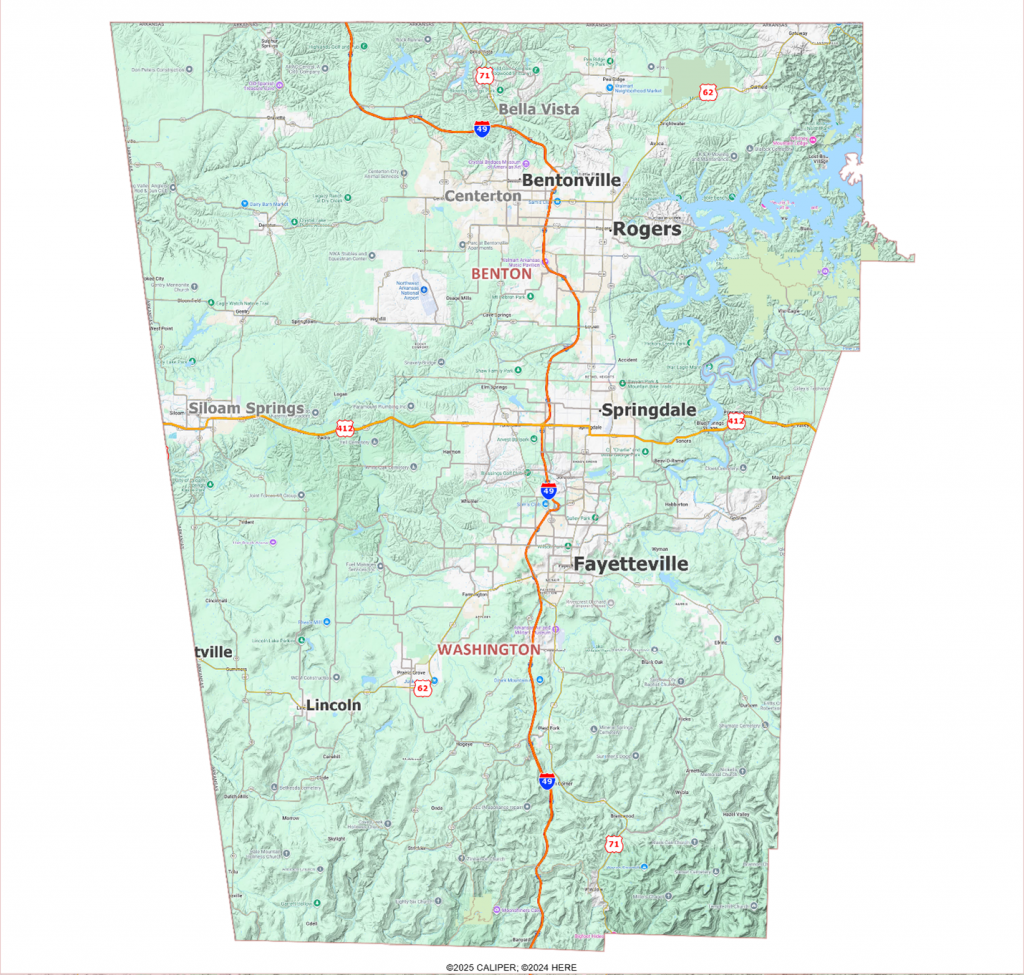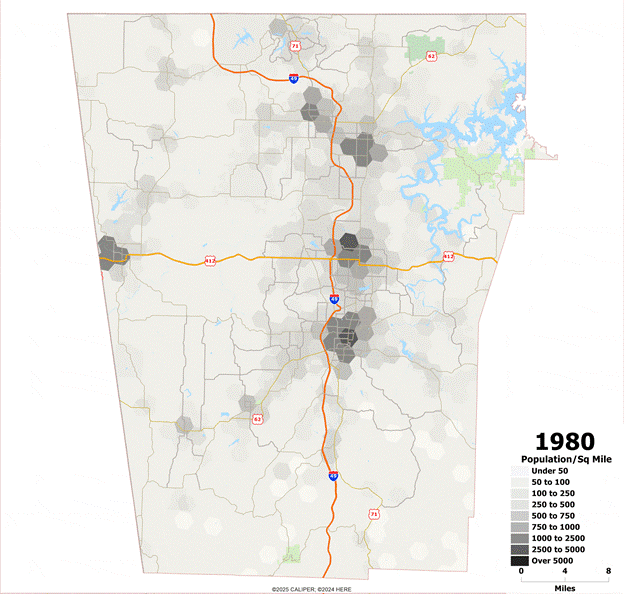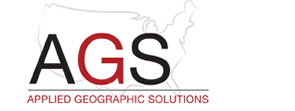Ask people what metropolitan areas have grown the most over the past half century, and most people will be able to name several major metros that have exploded in size. Lurking below these are the mid-size metropolitan areas which often fail to be on the radar, especially if they are not in Florida or Texas. Some examples of hidden gems? Provo, Utah has grown from just over 220,000 people in 1980 to nearly 800,000 while Huntsville, Alabama has doubled in size from 240,000 to 545,000.
One metro area that often escapes recognition is the Fayetteville-Springdale-Rogers area of northwestern Arkansas. In part, this is because there is no major city here – it is a collection of smaller cities that are coalescing over time. From just 186,000 people in 1980, the area grew to 546,000 in 2020 and has added a further 60,000 people over the last five years alone.
Located in the Ozark Plateau, the metropolitan area is essentially a ribbon of towns from Fayetteville in the south to Bella Vista in the north, with the towns of Rogers, Springdale and Bentonville in the middle. It is the headquarters of three major corporations – Walmart, Tyson Foods, and J.B. Hunt Transport – and is the home of the University of Arkansas.

The growth over the past decades has been consistent and distributed throughout the region:

The transformation of this area has been remarkable over the past fifty years. The Ozark Plateau has long been seen as a beautiful but relatively poor and backward part of the country. No more, though. Unemployment is well under the national average, and incomes have risen relative to other areas – the change in income from 1990 to the present was the 5th largest of the major metros, just behind San Jose and San Francisco. While still ‘in the middle of the pack’ ranking, its low cost of living and relatively low taxes make it an affordable and attractive area. The average educational level of its residents has steadily grown over the years, and the large employers have little trouble attracting skilled workers and professionals.
So, what lies ahead? Provided that there is employment stability, primarily meaning that Walmart sticks around, the area should continue to grow and prosper. Given the natural beauty of the Ozarks, a relatively moderate climate, northwestern Arkansas should continue to grow at a good pace, but more importantly, its relative affluence should continue its long journey from impoverished backwater to the national stage.


Recent Comments